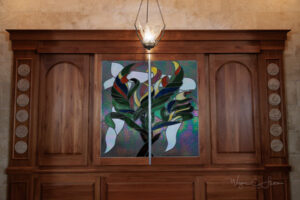
Reform Judaism is the largest Jewish movement in North America. Our belief is that the Torah is a living document that evolves as times change. As Reform Jews, Tikkun Olam (repairing the world) is paramount. It is because of this belief that social justice is a main pillar of Reform Judaism and is committed to equality and advocacy for the marginalized. With the acceptance and inclusion of all people created in God’s image, Reform Judaism welcomes all – those born Jewish, Jews-by-choice, and those with either a Jewish father or mother. Reform Judaism sees men and women as equals and accepts those in the LGBTQ+ community.
The Reform Jewish movement believes that the state of Israel is important to the Jewish people and our history.
While striving to combine tradition with accessibility we try to make Judaism relevant to today’s life. As Reform Jews, we focus on ethical teachings rather than strict rituals.
For more information on Reform Judaism or the history of the Reform Movement please go to the Union for Reform Judaism website at http://www.urj.org.
ABOUT THE IMAGE: The Holy Ark
The original design and construction of the Holy Ark was a group effort by members of TBY. During the construction of the Ark by Keith Gardener, it became apparent that a fitting set of doors would be needed. TBY’s first Rabbi, Marc Goldman, challenged Temple member Shirley Rudnick to use her drawing skills and come up with a design for the doors.
Stained glass guru Karen Cockcroft then took on the task of transforming Shirley Rudnick’s designs into a stained glass masterpiece. The doors of the ark reflect four themes: The background feature of the door is a huge white Chai (the Hebrew word for Life). “Growing” out of the bottom of the doors is the “Tree of Life” (Eitz Chayim). In the back you can see the burning bush signifying when Moses meets Adonai. And mixed into the middle of the display is the Hebrew letter “shin” which is found on every Mezuzah. Overall, the doors reflect Shekinah (The Hebrew word for “God’s presence”).
Although this word does not appear in the Bible, scholars use it to refer to the dwelling place of God, especially the Temple in Jerusalem. The actual work on the doors took almost three weeks to complete. As you attend services, look for the four symbols found on the doors and consider the group effort and love that was put into making this beautiful ark. (Author – Bernie Levy)
